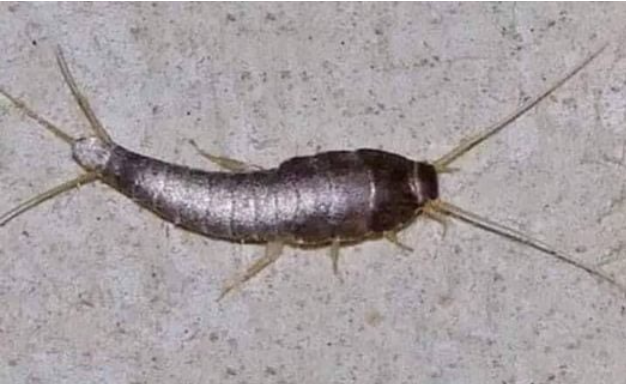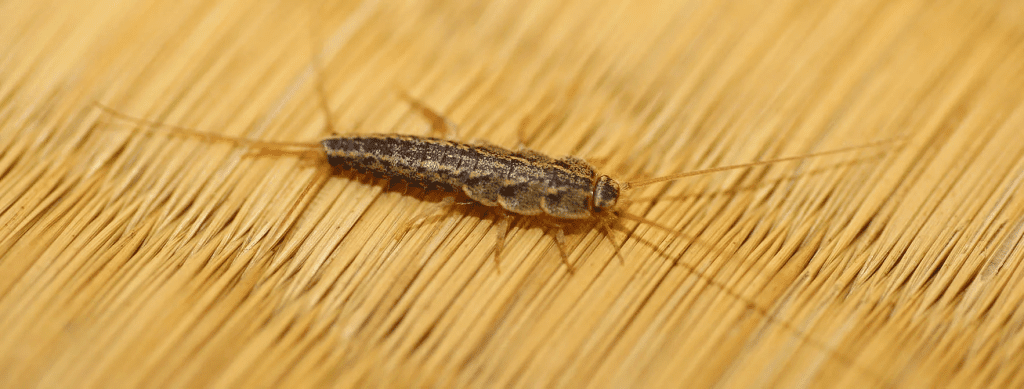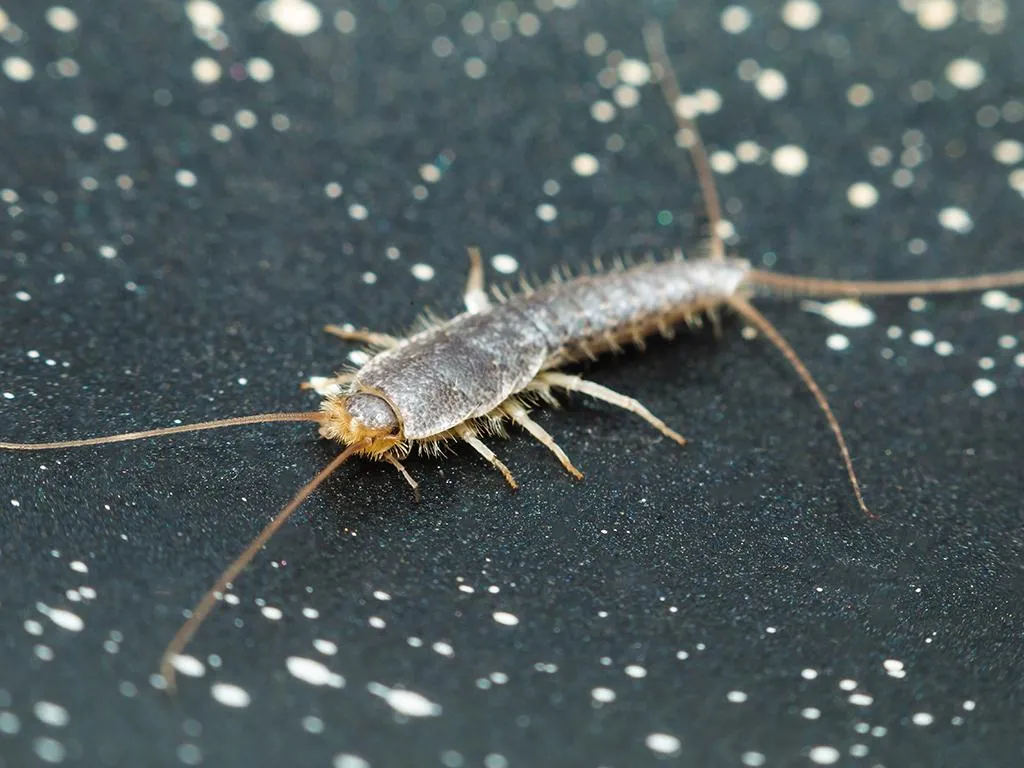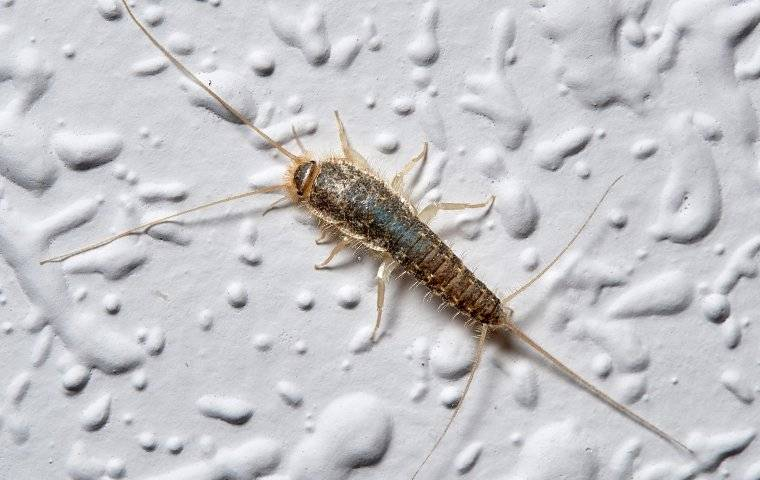Silverfish might be tiny, but their presence can be a big nuisance. These nocturnal pests can quietly wreak havoc in your home, feeding on books, wallpaper, and even clothing. The worst part? You might not even know they’re there until the damage is already done.
If you’re dealing with silverfish, don’t panic. There are natural and effective ways to get rid of them—without resorting to toxic chemicals. Let’s dive into everything you need to know about silverfish, including how to identify them, what attracts them, and how to keep them out of your home for good.
What Are Silverfish? A Closer Look at These Mysterious Pests

Silverfish are small, wingless insects with a distinctive silvery-blue color. They get their name from their fish-like movements, darting quickly from place to place. But make no mistake—these pests have nothing to do with fish.
Here’s how to identify a silverfish:
- Silvery or grayish color with a metallic sheen
- Elongated, carrot-shaped body that can grow up to ½ inch in length
- Two long antennae and three tail-like appendages at the back
- No wings, but extremely fast
- Nocturnal behavior—they hide during the day and come out at night
Because they move so quickly and prefer the dark, you may not notice them until their numbers grow. If you spot one scurrying away when you turn on a light, there’s a good chance more are hiding nearby.
Why Do Silverfish Invade Your Home?
Video : Why You Do Not Want Silverfish in Your Home
Silverfish don’t invade your home just for fun—they’re on the hunt for food, moisture, and shelter. These pests are attracted to:
Starchy Foods and Paper Products
Silverfish thrive on anything rich in starch, sugar, or protein. This includes:
- Books, magazines, and newspapers
- Wallpaper glue
- Cardboard boxes
- Stored cereals, pasta, and flour
Moisture and Humidity
Silverfish love humid environments, which is why you’ll often find them in:
- Bathrooms
- Basements
- Kitchens
- Laundry rooms
If your home has high humidity levels, it becomes the perfect breeding ground for silverfish.

Cracks and Dark Hiding Spots
Silverfish enter homes through small cracks in walls, windows, and floors. They prefer dark, undisturbed places, such as attics, closets, and behind furniture.
Are Silverfish Harmful? What Damage Can They Cause?
The good news? Silverfish don’t bite, sting, or spread diseases. However, they can still be a major nuisance.
Damage to Belongings
Silverfish can destroy valuable items in your home, including:
- Books and important documents – They chew through paper, leaving behind ragged holes.
- Wallpaper – They eat the glue that holds wallpaper to walls, causing peeling.
- Clothing and fabrics – Silverfish will nibble on cotton, silk, and linen.
- Food supplies – They contaminate pantry goods by getting into stored food.
Mess and Unwanted Guests
- They leave behind yellowish stains and tiny feces resembling black pepper.
- A silverfish infestation can attract other pests, such as spiders and centipedes, that prey on them.
While they don’t pose a direct health risk, silverfish can still make your home feel unclean and require costly repairs to books, clothing, and wallpaper.
Video : How to get rid of long-tailed silverfish
How to Get Rid of Silverfish Naturally
If you’ve spotted silverfish in your home, don’t rush to grab chemical sprays. Many natural and non-toxic methods can effectively eliminate them.
Reduce Moisture Levels
Since silverfish thrive in damp environments, lowering humidity is key. Try these methods:
- Use dehumidifiers in basements and bathrooms.
- Fix leaky pipes and improve ventilation in damp areas.
- Store books, clothes, and papers in dry, sealed containers.
Seal Entry Points

Prevent more silverfish from entering by sealing cracks and gaps around:
- Windows and door frames
- Baseboards and walls
- Pipes and vents
This will also help keep other pests out of your home.
Use Natural Repellents
Silverfish dislike certain smells, so using natural repellents can help keep them away. Try:
- Cedar shavings or cedar oil – Place cedar in closets, bookshelves, and storage areas.
- Lavender or citrus peels – Their strong scents deter silverfish.
- Cinnamon sticks – A simple yet effective natural repellent.
Make DIY Silverfish Traps
You can trap silverfish using common household items:
- Jar trap – Wrap a glass jar with masking tape on the outside, then place a small piece of bread inside. Silverfish climb in but can’t get out.
- Newspaper trap – Roll up a damp newspaper, secure the ends, and leave it overnight. In the morning, discard the paper with trapped silverfish inside.
Use Diatomaceous Earth (DE)
A non-toxic, natural insect killer, diatomaceous earth dehydrates silverfish on contact. Sprinkle DE in areas where you’ve seen silverfish, such as:
- Behind appliances
- Along baseboards
- In closets and bookshelves
Unlike chemical sprays, DE is safe for pets and children.
When to Call a Professional Exterminator

If you’ve tried all these methods and still have a silverfish problem, it might be time to call in the pros. Pest control experts can:
- Identify hidden infestation areas.
- Use eco-friendly treatments to remove silverfish.
- Provide long-term prevention strategies.
A professional can help ensure that your home stays silverfish-free for good.
Final Thoughts: Keep Silverfish Out for Good
Silverfish might not be dangerous, but they can certainly be destructive. The best way to deal with them is through prevention—keep your home dry, store food properly, and seal up any cracks where they might enter.
If you already have a silverfish problem, don’t panic. Simple home remedies like diatomaceous earth, traps, and natural repellents can effectively eliminate them. And if all else fails, professional pest control services can help you get rid of them for good.
With the right approach, you can protect your home—and your belongings—from these sneaky little pests!


